January’s Birthstone: Garnets
As we step into the crisp embrace of January, the birthstone that takes center stage in the spotlight is none other than the captivating garnet. With its deep, rich hues and a history steeped in myth and tradition, garnets have held a special place in the hearts of gemstone enthusiasts for centuries. In this comprehensive guide, we delve into the world of garnets, exploring their origins, properties, and cultural significance. Whether you're a gemstone connoisseur or simply curious about the allure of January's birthstone, join us on a journey through the enchanting realm of garnets.

The Origins of Garnets
Garnets, derived from the Latin word "granatus" meaning grain, have a fascinating geological history. These gemstones are a group of minerals belonging to the silicate family, with various species and varieties exhibiting a range of colors. The most common color associated with garnets is a deep red, reminiscent of pomegranate seeds, but they can also be found in shades of green, yellow, orange, and even rare blue.
Garnets form in metamorphic rocks under high-pressure conditions, and their occurrence spans the globe. Notable deposits can be found in India, Brazil, Sri Lanka, and the United States, each contributing to the unique characteristics of garnets sourced from these regions.
The Spectrum of Garnet Varieties
Garnets are not a singular entity but encompass a diverse group of minerals, each with its distinct properties. The major garnet varieties include:
Almandine: Renowned for its deep red to reddish-brown hues, almandine is one of the most common and widely distributed varieties of garnet. It often occurs in metamorphic rocks and alluvial deposits.

Pyrope: Displaying a vivid red to purplish-red color, pyrope garnets are highly sought after for their fiery brilliance. They are often found in association with peridotite and eclogite rocks.

Spessartine: Characterized by its orange to reddish-brown shades, spessartine garnets are known for their vibrant colors. These gems are typically found in granite pegmatites and metamorphic rocks.

Grossular: With colors ranging from green to yellow, brown, and even colorless, grossular garnets are a versatile variety. They are found in metamorphic rocks, skarns, and occasionally in hydrothermal veins.

Andradite: Exhibiting colors such as green, yellow, and brown, andradite garnets are known for their luster and transparency. They are commonly found in metamorphic rocks and can also occur as nodules.

Uvarovite: The rarest of all garnet varieties, uvarovite is recognized for its vibrant green color. It is typically found as small crystals in chromite deposits.

The Deep Symbolism of Garnets
Garnets have held significant cultural and symbolic value throughout history. In various ancient civilizations, these gemstones were believed to possess mystical properties and were often associated with themes of love, protection, and vitality. Here are some of the symbolic meanings attributed to garnets:
Passionate Love: The deep red color of garnets has long been associated with passionate love and enduring commitment. In ancient Rome, garnets were exchanged as tokens of affection between lovers.

Protection and Strength: Garnets were believed to provide protection against evil forces and enhance the wearer's strength and courage. Warriors in medieval times often wore garnet talismans for this reason.

Vitality and Energy: The vibrant energy emitted by garnets was thought to invigorate the body and spirit. In some cultures, these gemstones were worn to enhance one's vitality and combat fatigue.

Garnets in Historical Context
Throughout history, garnets have been revered and adorned by various cultures for their beauty and perceived mystical properties. Some noteworthy instances include:
Ancient Egypt: Garnets were commonly used in ancient Egypt for both jewelry and as inlays in elaborate craftsmanship. They were associated with the protective goddess Isis and were believed to bring prosperity and good health.

Ancient Greece and Rome: In ancient Greece, garnets were associated with the goddess Persephone, symbolizing transformation and rebirth. The Romans similarly valued garnets for their association with love and passion.

Medieval Europe: Garnets gained popularity in medieval Europe, where they were used as decorative elements in royal regalia and religious artifacts. They were also believed to have protective qualities during battles.
Physical and Metaphysical Properties of Garnets
Understanding the physical and metaphysical properties of garnets adds depth to the appreciation of these enchanting gemstones:
Hardness and Durability: Garnets boast a hardness ranging from 6.5 to 7.5 on the Mohs scale, making them suitable for a variety of jewelry applications. Their durability ensures that they can withstand everyday wear.
Brilliance and Luster: The refractive index of garnets contributes to their exceptional brilliance, creating a dazzling play of light within the gemstone. Their vitreous or glassy luster adds to their overall allure.
Energetic Properties: In the realm of crystal healing and metaphysics, garnets are believed to possess energizing and revitalizing properties. They are thought to stimulate the flow of energy throughout the body, promoting balance and well-being.
Chakra Alignment: Garnets are often associated with the root chakra, which governs feelings of security, stability, and grounding. Wearing garnet jewelry is believed to harmonize and balance this vital energy center.
Choosing the Perfect Garnet: Factors to Consider
When selecting a garnet, several factors come into play to ensure you acquire a gemstone of exceptional quality:
Color: The color of a garnet is a crucial factor in determining its value. Deep reds, intense oranges, and vibrant greens are highly prized. Look for saturated hues with minimal undertones.
Clarity: While some garnets may have natural inclusions, a high-quality gemstone should be relatively free of visible flaws. A gem with good clarity will exhibit a more brilliant appearance.
Cut: A well-crafted cut enhances the beauty and brilliance of a garnet. Different varieties may be cut in various styles, but a skilled lapidary will ensure that the facets complement the gem's natural color and luster.
Carat Weight: The size of the garnet, measured in carats, is a personal preference. Consider the balance between size and quality, as larger stones with exceptional color and clarity can be more valuable.
Caring for Your Garnet Jewelry
To ensure the longevity and beauty of your garnet jewelry, follow these care tips:
Avoid Harsh Chemicals: Garnets are generally durable, but exposure to harsh chemicals can damage them. Remove your jewelry before using cleaning agents, perfumes, or engaging in activities that may expose the gemstone to chemicals.
Regular Cleaning: Clean your garnet jewelry with a soft brush, mild soap, and warm water. Avoid using ultrasonic cleaners, as they may damage the gemstone.
Store Properly: Store your garnet jewelry separately from other gemstones to prevent scratching. Consider keeping them in a fabric-lined jewelry box or pouch.
Professional Inspection: Periodically have your garnet jewelry inspected by a professional jeweler to ensure the settings are secure and the gemstone is in good condition.
FAQs
Q1: What is the significance of garnets as January's birthstone?
A1: Garnets are believed to bring good luck, protection, and vitality to those born in January. As a symbol of love and commitment, they make meaningful and cherished gifts for birthdays and other special occasions.
Q2: Can garnets be used in engagement rings?
A2: Yes, garnets are suitable for engagement rings. Their durability and symbolism make them an unconventional yet beautiful choice for those seeking a unique and meaningful gemstone.
Q3: Are there synthetic garnets available in the market?
A3: Yes, synthetic garnets are produced in laboratories, offering an affordable alternative to natural gemstones. However, the rarity and natural beauty of genuine garnets make them highly valued.
Q4: How can I identify a genuine garnet?
A4: Genuine garnets exhibit specific characteristics, including a rich color, brilliance, and a hardness of 6.5 to 7.5 on the Mohs scale. Consulting with a reputable jeweler and requesting a gemstone certificate can help ensure authenticity.
Q5: What are the most popular garnet jewelry styles?
A5: Garnets are versatile and can be featured in various jewelry styles, including rings, necklaces, earrings, and bracelets. Vintage-inspired designs, as well as contemporary settings, showcase the gemstone's beauty.
Conclusion:
In conclusion, garnets stand as a testament to the timeless allure of gemstones, captivating hearts with their rich colors, historical significance, and symbolic meanings. Whether worn as a birthstone, a symbol of love, or a unique piece of jewelry, garnets bring a touch of magic and sophistication to any collection. If you are interested in buying a piece, let Gandhara Gems be your trusted partner in doing that.
Browse our Premium Garnets and more Here “Click Here”
Happy Shopping
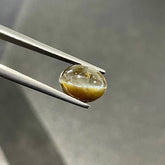
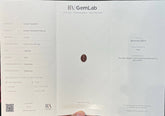
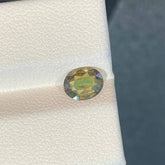
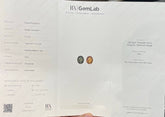


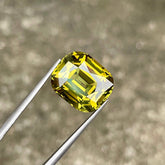
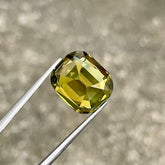


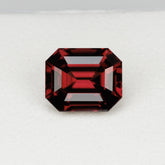

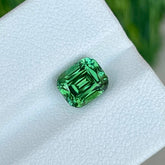

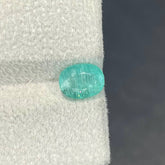

Leave a comment
Please note, comments need to be approved before they are published.